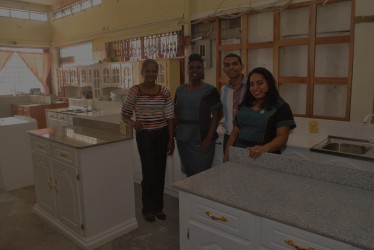By the end of August, Oriental General Store would have taken what its General Manager considers to be an important step in changing the face of a company that has a great deal more to offer consumers than it currently does.
The marketing of its products will be enhanced by the introduction of new initiatives, some of which, for the time being, he chooses to keep to himself. What Stabroek Business saw, however, during a visit to the Water and Holmes streets outlet and the Holmes street bond was evidence of renovation seemingly intended to give the establishment a more modern appearance.

Apart from completing his studies in Business Administration at the University of Guyana, Premendra Ram Parsan’s other preoccupation is with transforming Oriental General Store into a more modern trading company. He has every confidence in the quality of the furniture which the company offers consumers and he has reached the conclusion that image is everything and if Oriental is to compete in the contemporary trading environment there is need for investment in selling its goods.
The investment, the 35-year-old Parsan says, is, in financial terms, a “major” one, though equally important is the investment in creative endeavour to refashion the image of the establishment.
Among other things, Oriental General Store is tweaking both its image and its marketing strategy in other ways. Shortly, the store’s marketing strategy will include its own electronic showroom utilizing both its own Swebsite as well as the various other means of IT-driven communication.
Oriental General Store is celebrating its 20th anniversary this year. It began as a hardware store under Parsan’s father, Haresh Ram Parsan. Afterwards, the company began buying and selling furniture. Parsan says the objective of the exercise was to offer “affordable yet durable furniture” to the local market. “Pricing is always a challenge when you are in the business of value-added products,” Parsan says.
Three years ago, the eldest Parsan sought to strengthen his hold on the furniture industry by investing in Semakiah Woodworking. Situated at Hague on the West Bank Demerara, Semakiah’s aim was to facilitate control over the production process in order to strengthen Oriental’s hold on both cost and designs.
Semakiah has thrown up other challenges. Parsan says that while the company continues to recruit skilled joiners to work in the Hague factory, the growth and development of the furniture industry depends equally on the creative imagination of the joiners. He explains that the varied design demands of consumers continue to challenge the abilities of the producers.
Oriental General Store, Parsan says, continues to be preoccupied with bridging the gap between affordable prices and high quality. “We want to do things the old-fashioned way. We want furniture to last from one generation to another. We are, however, finding it more and more of a challenge to do so.”
In the period ahead, Parsan says, Oriental General Store will be eyeing diversification, seeking to respond to customer demand by offering a new range of household items that complement the range of furniture currently on offer. Diversification, he says, is a response to the challenge of competition and an imperative that can help to further grow the image of a brand that has already secured a worthwhile reputation.
As regards seeking out an overseas market, Parsan says that in his opinion that has to come in time. “In my opinion we’re not quite ready for that.” He believes that there are still challenges associated with producing in the volumes necessary to sustain overseas market. “Apart from that we need to examine issues of cost and competition,” Parsan says.





